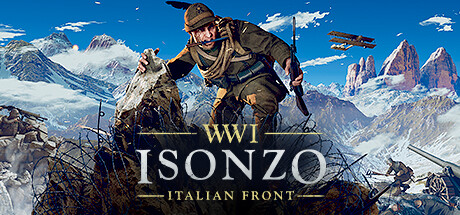
The less poetic name is the Second Battle of the Piave River. On June 15th 1918, the Austro-Hungarian army gathered their strength for a massive assault on Italian positions. Russia had been out of the war for some time, and the Battle of Caporetto in 1917 had been a great success for the Central Powers, moving the frontline up to the Piave river. This new offensive was aimed at breaking through the Italian defense on the Piave. Our upcoming map is named after a hill that would stand at the center of this battle: Montello.
Almost 100,000 men and 7,000 artillery pieces were mustered for the attack, with many of the Austro-Hungarian formations having been trained in the highly effective 'infiltration tactics' used by German stormtroopers. A major victory here could effectively take Italy out of the war, allowing the Central Powers to focus more resources on the troubled Western Front.
 The battlefield around an early objective location.
The battlefield around an early objective location.However, the Italians had not been idle since their defeat in the Battle of Caporetto. Of particular note was the removal of the incompetent General Luigi Cadorna and his replacement with General Armando Diaz as senior commander of the Italian Army. Under his leadership, Italian morale was stabilized and more flexible defensive tactics were developed, allowing for more independence for troops at the frontline - including giving them freedom to retreat or counterattack as needed, in sharp contrast to Cadorna's often bloody and ineffective determination to hold ground at any cost. During the Battle of Caporetto, he initially denied a request to withdraw from a commander on the ground, which led to Italian soldiers having to fall back under constant harassment from Central Powers troops instead of being able to make an orderly retreat.

A drawing of General Diaz on his 60th birthday in 1922, 4 years after the Second Battle of the Piave.
The battle started poorly for the Austro-Hungarians, as Diaz had intelligence on the exact starting time of their attack. Half an hour before they were due to go 'over the top', a heavy artillery barrage struck the Austro-Hungarian forward trenches and caused heavy casualties. Despite this, the attack mostly began as scheduled and the Piave river was crossed. This is where the battle begins for the players - one obstacle has been dealt with, but now there will be hard fighting as they must first climb and then descend Montello. On the other side lie the final objectives for this map.
 The river crossing where the Austro-Hungarian players begin.
The river crossing where the Austro-Hungarian players begin.Join us for the next blog to learn more about the terrain you'll be fighting over in the first few sectors, and find out how the battle went historically.
We'll be back in two weeks!
Follow our socials:
X / Twitter YouTube Discord Reddit
